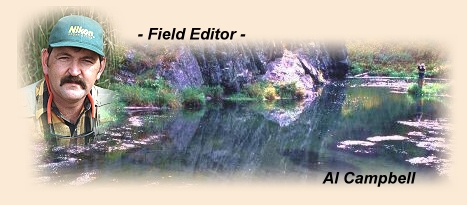
Today the Black Hills of South Dakota are on fire. Homes
have been destroyed, hundreds of families had to leave their
homes and seek shelter away from the devastation, and hundreds
of firefighters are putting their lives on the line to protect
people and property from the flames. The same story is echoed
in dozens of other places in other western states.
In dry years like this one, we couldn't possibly expect to prevent
all fires. It only takes one lightning strike to start a blaze.
Brown, brittle grass and trees that haven't had a good drink of
water for more than a month virtually explode in flames when the
right spark reaches them. It's a fact of nature none of us enjoy.
Fire isn't totally bad though. Due to endless lawsuits by several
"environmental" groups, many of the forests that are burning
haven't been thinned for decades. All that fuel is bound to
ignite sometime. It's nature's way of balancing the books.
I suppose that's why some sort of a thinning force is needed
for a healthy forest. If they aren't thinned by man, nature
will do it without discrimination.
The forests will return, they always do; but now they will
have a greater variety of plants to sustain the animals that
live there. A greater variety of plant life usually results
in a greater variety of animal life. It also results in
healthier animals. The variety of plants that can live under
a thick canopy of evergreens is limited compared to the types
of plants that grow in mixed or semi-open forests. Call it
a balanced diet if you like.
For a while, the streams in our area will have more water flowing
through them. Much of the area that's burning right now is
semi-arid compared to the forests of the Pacific northwest,
and a thick canopy of big trees does a pretty good job of
sucking up a lot of water that traditionally made it to the
streams. More water in the streams means more fishing
opportunities for you and me.
I guess what bothers me most about the fires is that the
intensity of some of those fires didn't have to be as severe
as it is. The heavy load of fuel in many of the fires could
have and should have been reduced by selective logging. I
know; logging is a bad word to some people, but it's also a
tool that can be used to promote healthy forests, if forest
managers are allowed to use it.
I've seen the pictures some environmental groups send along
with their pleas for donations. They show mountain tops
stripped bare by evil loggers. They show streams choked to
death by runoff created by the evil loggers. I surely wouldn't
want that to happen here. But wait, it hasn't happened here;
at least not since I moved to the Black Hills more than a decade
ago. In fact, I haven't seen that type of devastation anywhere;
that is, except where a fire has burned.
The type of logging I have observed in the Black Hills and most
places I've visited in the rocky mountain west is a thinning
type of operation. Some large trees are removed to provide
lumber for homes and other projects, and some are left behind
to grow even larger. The result is a forest that still has
plenty of cover, but is thin enough to reduce the intensity
and spread of wildfires while it provides a more balanced
environment for the variety of animals that call the forest
home.
Logging roads aren't always bad either. Many times, the
progression of a fire was stopped by a logging road that
stood in its way. If the overhead canopy is thin enough
to limit treetop to treetop spreading, the fire is limited
to travel on the ground; and dirt barriers are quite effective
in limiting the spread of ground fires. Roads won't stop
everything, especially airborne embers, but they can help
limit the spread of fires.
I'm not advocating opening up wilderness areas to logging.
I don't know a single logger who holds that view either.
I'm not advocating clear-cutting the hilltops, and I don't
know a single local logger who is. All I'm saying is that
there is a place where a healthy forest and loggers can exist
together; and it will be the loggers and timber managers who
keep the forest healthy and a little bit safer in the dry
years when fires are bound to happen.
For now though, it's fires that create a varied habitat and
thin the forests. They are the only tools some groups can't
take to court. It doesn't have to be that way, but the
alternatives commonly used to create a forest with diverse
habitat have been tied up in the courts for decades. In time,
the land will recover, the streams will recover and the wildlife
will benefit from the change. Too bad it won't be that way for
way for all of the people involved.
~ AC
|





